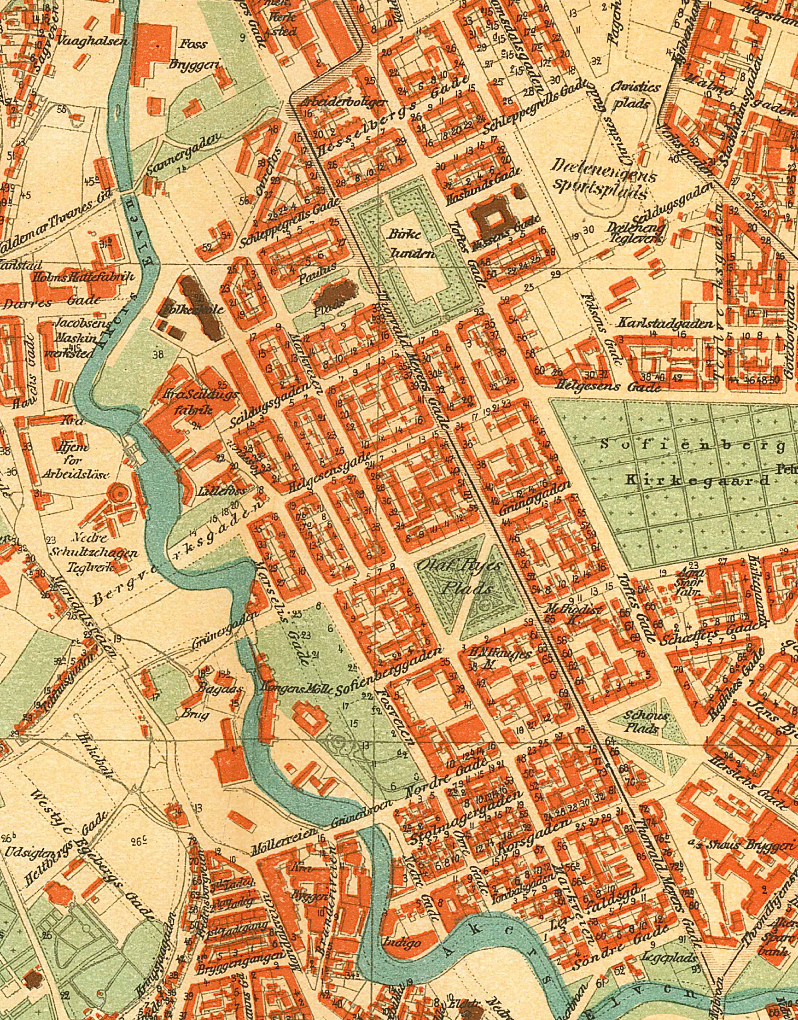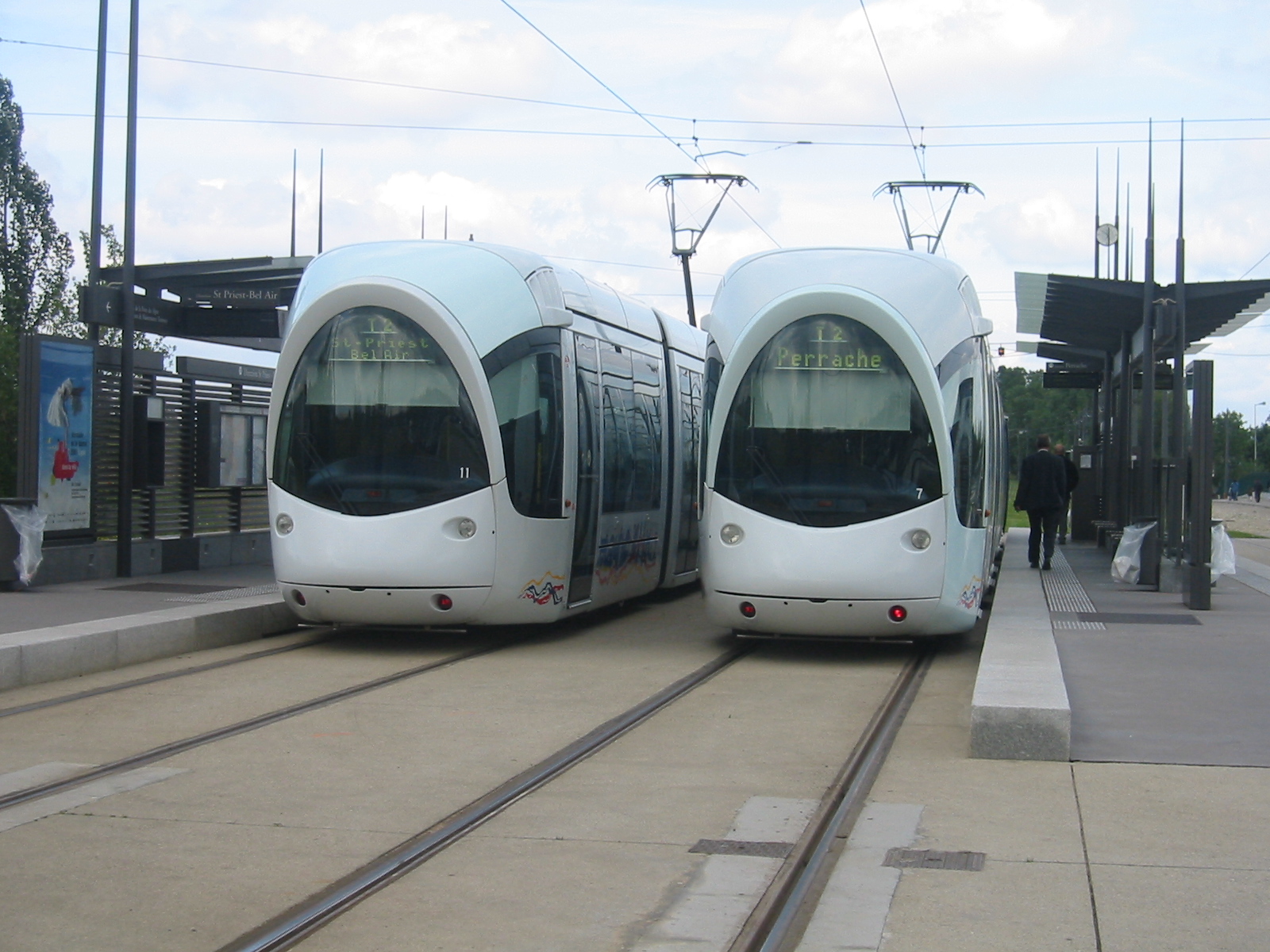|
Birkelunden
Birkelunden (lit. 'The Birch Grove') is a park placed centrally in the Grünerløkka borough of Oslo, Norway. It is formed as a rectangle, more or less like a city block. History The area belonged to the municipality of Aker until 1858, when it was incorporated into Christiania (Oslo). It was made into a park on Thorvald Meyer's orders in the 1860s. Having developed the neighborhood Grünerløkka, Meyer gave the park Birkelunden to the municipality in 1882. It received major renovations between 1916 and 1920 and 1984 and 1986. In 1920 it was the intention to create a children's playground as well as a small ice rink. A music pavilion was added in 1926, and a small pool added between 1927 and 1928. The park also has several monuments, including a monument to Norwegian volunteers in the Spanish Civil War. Other major parks in the area are Olaf Ryes plass, Sofienberg Park, and Tøyen Park. The park is surrounded by four streets, and housing three and four storeys tall, mostly buil ... [...More Info...] [...Related Items...] OR: [Wikipedia] [Google] [Baidu] |
Oslo Tramway
The Oslo tram network ( no, Trikken i Oslo, short from ', 'electric') is the tram system in Oslo, Norway. It consists of six lines with 99 stops and has a daily ridership of 132,000. It is operated by , a subsidiary of the municipally-owned who maintain the track and 72 tram vehicles on contracts with the public transport authority . The system operates on standard gauge and uses 750 V DC overhead. Depot, workshops and headquarters are at (at the terminus of lines 13 and 17). There is also a depot at (along lines 18 and 19) that is home to the technical company InfraPartner, which maintains the track for the tram and metro systems in Oslo, and a small office building for . History The first tram in Oslo was opened in 1875 with a short line between Homansbyen west of the city centre, Oslo West Railway Station and a sideline to Grønland, east of the city centre. The first "trams" were in fact horse-drawn vehicles on flanged steel wheels. The first expansion of the line came ... [...More Info...] [...Related Items...] OR: [Wikipedia] [Google] [Baidu] |
Paulus Church
Paulus Church (Norwegian: ''Paulus kirke''; tr. ''Paul's Church'' or ''St. Paul's Church'') is a church which was consecrated in 1892, located in Grünerløkka in Oslo, Norway, just opposite the Birkelunden Park. The church is made of brick with a weak front running cross-arms and has about 500 seats. It is inspired by German Gothic style and has a high narrow tower above the entrance, which faces east. Paul's Church was designed by the architect Henrik Bull in 1889, and restoration of the church were made in 1917-18 and in 1972. The Church's altarpiece is in the brown-stained pine with gold trim and divided into three. It is adorned with trumpet angels by Jo Visdalen and two altar paintings by Christen Brun. Between the two paintings are a Christ Figure in plaster made by the sculptor Gunnar Olsen Alvær in 1894. The church organ at Paulus Church was designed by the German organ maker Albert Hollenbach Albert may refer to: Companies * Albert (supermarket), a supermarket ch ... [...More Info...] [...Related Items...] OR: [Wikipedia] [Google] [Baidu] |
Olaf Ryes Plass
Olaf Ryes plass (lit. "Olaf Rye's Square") is a square and park placed centrally in the Grünerløkka borough of Oslo, Norway. It is more or less square in shape. History The area belonged to the municipality of Aker until 1858, when it was incorporated into Christiania (Oslo). It was an open area which was bought by the municipality from Thorvald Meyer in 1863. In 1864 it received its name; the namesake was the military leader Olaf Rye. It was made into a park in 1890. The park has a bust monument of Eilert Sundt, raised in 1892, and a fountain was added some years later. Other major parks in the area are Birkelunden, Sofienberg Park, and Tøyen Park. The park is surrounded by four streets as well as housing three and four storeys tall, mostly built in the 1870s, 1880s, and 1890s. The three-storey housing was built first. Among the most notable inhabitants of these buildings were the young Edvard Munch from 1882 to 1883. Already in 1875 Johan Cordt Harmens Storjohann took ... [...More Info...] [...Related Items...] OR: [Wikipedia] [Google] [Baidu] |
Grünerløkka Map 1917
Grünerløkka is a borough of the city of Oslo, Norway. Grünerløkka became part of the city of Oslo (then Christiania) in 1858. Grünerløkka was traditionally a working class district; however, since the late 20th century the area has increasingly undergone gentrification. Although it is located in the East End, it is more expensive than other parts of the East End. Etymology The first element was derived from the surname ''Grüner''. The last element is the definite form of ''løkke'', meaning " paddock". Grünerløkka was named after Friedrich Grüner (1628-1674) who served as chief administrator (''Oberhauptmann'') and the master of the mint (''myntmester'') at Christiania from 1651 until his death in 1674. Grüner purchased the Kings Mill (''Kongens mølle'') and surrounding acreage in the area from King Christian V of Denmark in 1672. History Thorvald Meyer (1818–1909) bought parts of the Grünerløkka area in 1861. The industrialist built the main street of ... [...More Info...] [...Related Items...] OR: [Wikipedia] [Google] [Baidu] |
Grünerløkka
Grünerløkka is a borough of the city of Oslo, Norway. Grünerløkka became part of the city of Oslo (then Christiania) in 1858. Grünerløkka was traditionally a working class district; however, since the late 20th century the area has increasingly undergone gentrification. Although it is located in the East End, it is more expensive than other parts of the East End. Etymology The first element was derived from the surname ''Grüner''. The last element is the definite form of ''løkke'', meaning "paddock". Grünerløkka was named after Friedrich Grüner (1628-1674) who served as chief administrator (''Oberhauptmann'') and the master of the mint (''myntmester'') at Christiania from 1651 until his death in 1674. Grüner purchased the Kings Mill (''Kongens mølle'') and surrounding acreage in the area from King Christian V of Denmark in 1672. History Thorvald Meyer (1818–1909) bought parts of the Grünerløkka area in 1861. The industrialist built the main street of Grüne ... [...More Info...] [...Related Items...] OR: [Wikipedia] [Google] [Baidu] |
Rectangle
In Euclidean plane geometry, a rectangle is a quadrilateral with four right angles. It can also be defined as: an equiangular quadrilateral, since equiangular means that all of its angles are equal (360°/4 = 90°); or a parallelogram containing a right angle. A rectangle with four sides of equal length is a '' square''. The term " oblong" is occasionally used to refer to a non- square rectangle. A rectangle with vertices ''ABCD'' would be denoted as . The word rectangle comes from the Latin ''rectangulus'', which is a combination of ''rectus'' (as an adjective, right, proper) and ''angulus'' (angle). A crossed rectangle is a crossed (self-intersecting) quadrilateral which consists of two opposite sides of a rectangle along with the two diagonals (therefore only two sides are parallel). It is a special case of an antiparallelogram, and its angles are not right angles and not all equal, though opposite angles are equal. Other geometries, such as spherical, elliptic, and ... [...More Info...] [...Related Items...] OR: [Wikipedia] [Google] [Baidu] |
Ruter
Ruter AS is the public transport authority for Oslo and Akershus counties in Norway. Formally a limited company – 60% of its shares are owned by the Oslo county municipality and 40% by that of Akershus – it is responsible for the administration, funding, and marketing (but not direct operation) of public transport in the two counties, including buses, the Oslo Metro (''T-banen i Oslo''), Oslo Trams (''Trikken i Oslo''), and ferry services. Ruter also holds agreements with Norwegian State Railways concerning the regulation of fares on local and regional train services operated within the two counties. Operation The operation of services is performed by other companies: *Bus routes are subject to public service obligation, and operators include UniBuss, Nettbuss, Norgesbuss, Schau's Buss, and Nobina Norge. *The metro system is operated by Sporveien T-banen while the tramway is operated by Sporveien Trikken, both subsidiaries of the municipally owned Sporveien Oslo AS. ... [...More Info...] [...Related Items...] OR: [Wikipedia] [Google] [Baidu] |
Grünerløkka–Torshov Line
The Grünerløkka–Torshov ( no, Grünerløkka–Torshov-linjen) is a tramway line running between Jernbanetorget to Storo in Oslo, Norway. It is served by lines 11, 12 and 18 of the Oslo Tramway. The line serves the city-centre of Oslo, Grunerlokka and Sagene. The line was built by Kristiania Sporveisselskap and opened for horsecars in 1878 from Stortorvet to Grünerløkka, and was extended on 12 April 1879 to St. Halvards Plass. Electrification occurred in 1899, with a further extension to Grefsen Station in 1902. In 1934, the Kjelsås Line was built branching off from Storo, going through Disen and the suburbs of Kjelsås, before terminating at Kjelsås tram stop Kjelsås, sometimes called Kjelsaas, is one of the northern neighbourhoods of Oslo situated in Nordre Aker, the northern borough of Oslo, Norway. History Together with Grefsen, Kjelsås was part of the borough ''Grefsen-Kjelsås'' until Janu .... Between 1988 and 1998, the trams to Sagene ran via ... [...More Info...] [...Related Items...] OR: [Wikipedia] [Google] [Baidu] |
Tram Stop
A tram stop, tram station, streetcar stop, or light rail station is a place designated for a tram, streetcar, or light rail vehicle to stop so passengers can board or alight it. Generally, tram stops share most characteristics of bus stops, but because trams operate on rails, they often include railway platforms, especially if stepless entries are provided for accessibility. However, trams may also be used with bus stop type flags and with mid-street pavements as platforms, in street running mode. Examples Most tram or streetcar stops in Melbourne and Toronto and other systems with extensive sections of street-running have no associated platforms, with stops in the middle of the roadway pavement. In most jurisdictions, traffic cannot legally pass a tram or streetcar whose doors are open, unless the tram is behind a safety zone or has a designated platform. On the other hand, several light rail systems have high-platform stops or stations with dedicated platforms at railway ... [...More Info...] [...Related Items...] OR: [Wikipedia] [Google] [Baidu] |
Government
A government is the system or group of people governing an organized community, generally a state. In the case of its broad associative definition, government normally consists of legislature, executive, and judiciary. Government is a means by which organizational policies are enforced, as well as a mechanism for determining policy. In many countries, the government has a kind of constitution, a statement of its governing principles and philosophy. While all types of organizations have governance, the term ''government'' is often used more specifically to refer to the approximately 200 independent national governments and subsidiary organizations. The major types of political systems in the modern era are democracies, monarchies, and authoritarian and totalitarian regimes. Historically prevalent forms of government include monarchy, aristocracy, timocracy, oligarchy, democracy, theocracy, and tyranny. These forms are not always mutually exclusive, and m ... [...More Info...] [...Related Items...] OR: [Wikipedia] [Google] [Baidu] |


.jpg)

